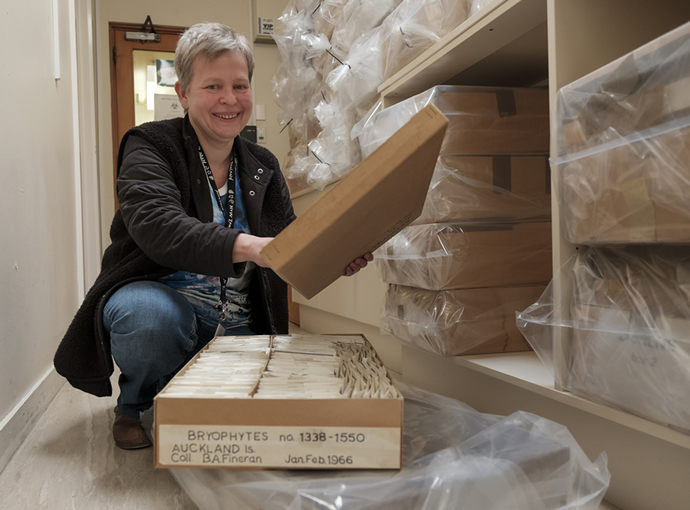Canterbury's Allan Herbarium now the world leader in subantarctic flora
A treasure-trove containing thousands of subantarctic specimens that date back to the 1800s arrived at Manaaki Whenua – Landcare Research last month, making it the world’s largest collection.
The Allan Herbarium is already New Zealand’s largest collection of dried plants, but to house the world’s largest collection from the subantarctic and be the world leader in this unique flora is exciting, says herbarium manager Ines Schonberger.
“It is an irreplaceable resource for researchers wanting to learn about the unique flora found in this part of the world,” says Schonberger

The herbarium, at Manaaki Whenua’s Lincoln site, was founded in 1928 and contains more than 640,000 specimens. The collection includes indigenous and exotic plants collected from around New Zealand and the South Pacific.
Material from New Zealand's subantarctic islands, a group of islands home to some of the most abundant and unique wildlife on earth, is already included in the herbarium’s collection.
The subantarctic collection has being transferred from the University of Canterbury (UC) and contains about 9,000 new specimens.
“We have received 117 boxes with around 8,000 to 9,000 specimens of species of cryptogams (mosses, lichens and liverworts), an important fern collection and other subantarctic specimens,” Schonberger says.
The specimens are not currently used for teaching and the University of Canterbury can no longer house them in their new Ernest Rutherford facility, so Manaaki Whenua will house the collection for ongoing conservation. The specimens will continue to be available to UC if required.
The herbarium is a registered containment facility and can loan specimens to researchers across the world - much like a library.
Schonberger says having this service will be of great value to international researchers, who will now be able to access this unique historic flora.
“Included in the collection is a lot of valuable and historic foreign material including a lichen collection by Brian Fineran from the 1970s,” explains Schonberger.
After the collection has gone through a biosecurity assessment, it will be stored in the herbarium, with several boxes containing fungi sent to the New Zealand Fungarium housed by Manaaki Whenua in Auckland.
All specimens will also be recorded and added to the online Systematic Collections Database https://scd.landcareresearch.co.nz

Herbarium manager Ines Schonberger with boxes of specimens

Packaged subantarctic specimens

Cryptogram specimen

Cryptogram specimen

Packaged subantarctic samples

Ines sorting through carefully-packaged incoming specimen

Checking specimen information

Checking specimen information

Subantarctic specimen

Subantarctic specimen

Specimen collected by JH Sorensen

Specimen collected by JH Sorensen

Subantarctic specimen

Argopsis megalospora, found only on Auckland and Campbell Islands

Bazzania aucklandica

Colobanthus sp

Phyllachne colensoi

Pseudocyphellaria coronata and Pseudocyphellaria sp.

Sundew Drosera stenopetala and liverwort Riccardia cochleata; Campbell Island
